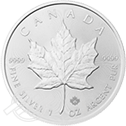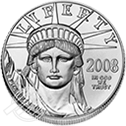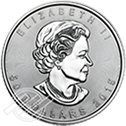Digital Money 101
What Is Digital Money?
Digital money is an intangible, electronic form of payment. Online technological infrastructure ensures that payments are accurately transferred and properly accounted for.
The internet has made the world smaller. With a push of a few keystrokes, buyers on one side of the world can easily purchase goods and services from sellers on the other side of the world.
Digital money not only makes the process possible. It makes it easy.
How Does Digital Money Work?
There are several different types of digital money and many variables to consider when trying to answer, “How does digital money work?”
Most types of digital money have their own unique characteristics.
The common denominator is they all fully transact electronically.
The users of digital money either send or accept a payment. That payment then processes through a system connecting the two sides of the transaction.
When the two sides agree upon the completion, the funds are dispersed and the goods sent or services commenced.
All this happens in the blink of an eye.
Some digital money uses blockchain technology and some is account- based.
Blockchain is public, meaning there is no centralized control of the network. Each block holds data that all involved parties must agree upon. There are no intermediaries—such as a bank or financial institution—to control the deal flow.
A blockchain is virtually anonymous. It contains no information on the user’s offline identity.
Account-based digital money uses an intermediary to govern each transaction.
The intermediary determines validity, disperses funds, and handles the reporting of the exchange.
Account-based digital currency carries large amounts of user’s identifiable information. They are not anonymous.
How Digital Money Differs From Paper Money
Paper money is tangible. You can hold it in your hands. Most know it as the bills and coins we carry (or used to carry) in our pockets.
Digital money lives entirely in cyberspace. It has no physical form.
Some digital money can convert to paper through ATM withdrawals or other means. When converted, it is no longer digital money.
Many see digital money as a safer alternative to paper.
Most digital money uses blockchain technology that is extremely difficult to counterfeit. Transactions across the blockchain lock at completion, and vendors face no threat of false chargebacks.
And, as we mentioned above, the blockchain affords a high level of anonymity and does not contain the personal information of the parties involved.
The arms-length completion helps eliminate theft, as no cash changes hands. Each participant owns a unique key to their “wallet.” Without that key, there’s no way to access digital money.
Types of Digital Money
Digital money is probably already a part of your life. Its seamless nature tends not to draw attention, as it helps make life easier.
Some digital money examples are:
- Online bank accounts
- Peer-to-peer payment systems such as Venmo, Cash App
- Direct deposit
Other digital money serves loftier purposes.
Cryptocurrency
You have probably heard of bitcoin, but there are thousands of different cryptocurrencies.
Cryptocurrency is used as a method of payment and as a speculative investment.
Crypto allows fast, decentralized, and anonymous transactions across borders. Its peer-to-peer nature eliminates the need for banks or financial institutions in the process—lowering costs and maintaining privacy.
Many use crypto as an investment vehicle.
The value of a crypto coin—such as bitcoin—fluctuates as supply and demand changes. There is a finite number of bitcoins that can ever be produced. When demand increases, so does the value.
Crypto investing can be very dangerous. It is not heavily regulated and can be quite volatile.
Stablecoins
Stablecoins are a type of cryptocurrency.
A stablecoin is tethered to a specific asset. The value of the crypto stays stable to that asset as the asset increases or decreases in price.
The most common stablecoins link to fiat-based currencies such as the U.S. dollar.
Stablecoins are typically backed by a reserve of their corresponding asset.
Many types of assets are used as collateral for stablecoins, including:
- Fiat currency
- Precious metals such as gold and silver
- Other cryptocurrency
- A-rated corporate debt
Central Bank Digital Currency
Central bank digital currency (CBDC) is a cyber-based version of fiat currency. CBDC is backed and distributed by the central bank of a nation.
Many countries are exploring banking alternatives that will:
- Expand access to funds
- Provide safety and security
- Allow cost-effective cross-border transactions
Several small countries—mostly in the Caribbean— have already implemented CBDC. The Bahamas uses the Sand Dollar, a digital version of the country’s dollar. It is issued by the Central Bank of the Bahamas.
Large nations and political unions, such as the United States and the European Union, are in the planning phase and still evaluating its viability.
Challenges of Using Digital Money
Digital money still has a ways to go before it becomes mainstream.
As with any new medium, governments must account for potential problems to ensure a smooth and safe transition.
Some of the challenges facing digital money are:
- Regulatory risk. Governments are playing catch-up and still developing rules for crypto and digital currency.
- Security risk. Digital wallets are accessed via private keys. If that key is lost, digital assets may be unrecoverable. If the key is stolen, bad actors can easily drain the accounts.
- Consumer education. Many of us move through day-to-day tasks without considering risk and rules. How does digital money work if consumers do not understand it? There will be a learning curve to overcome.
Many consumers feel that it is wise to hold tangible assets as well as utilize digital money.
Some roll over their eligible 401(k) or transfer their IRA into a Gold IRA or Silver IRA.
The precious metals IRA is a self-directed individual retirement account. You can own physical, real gold and silver—bars and coins—using investment funds that you already have.
The Future of Digital Money
For digital money, the future may be now.
Without consciously choosing digital money vs. paper money, many consumers are already voting with their spending habits.
Digital money has taken over, and the younger generations seemingly never carry cash. They split bills with Venmo, travel via Uber, and get deliveries from DoorDash — all using digital money.
While it may never fully replace the dollar bill, digital money’s continued rise is a safe bet.
To anchor your digital money portfolio with tangible, physical gold and silver, call the experts at Advantage Gold.
Advantage Gold—the highest-rated precious metals firm—helps investors own tangible assets in this digital world. Our account executives will walk you through the process and show you how easy it is to own something that you can touch and feel.
Call us today, or click the link and let us know how to contact you.
We’re happy to help.
Tags: digital money examples, digital money vs paper money, how does digital money work, what is digital money


